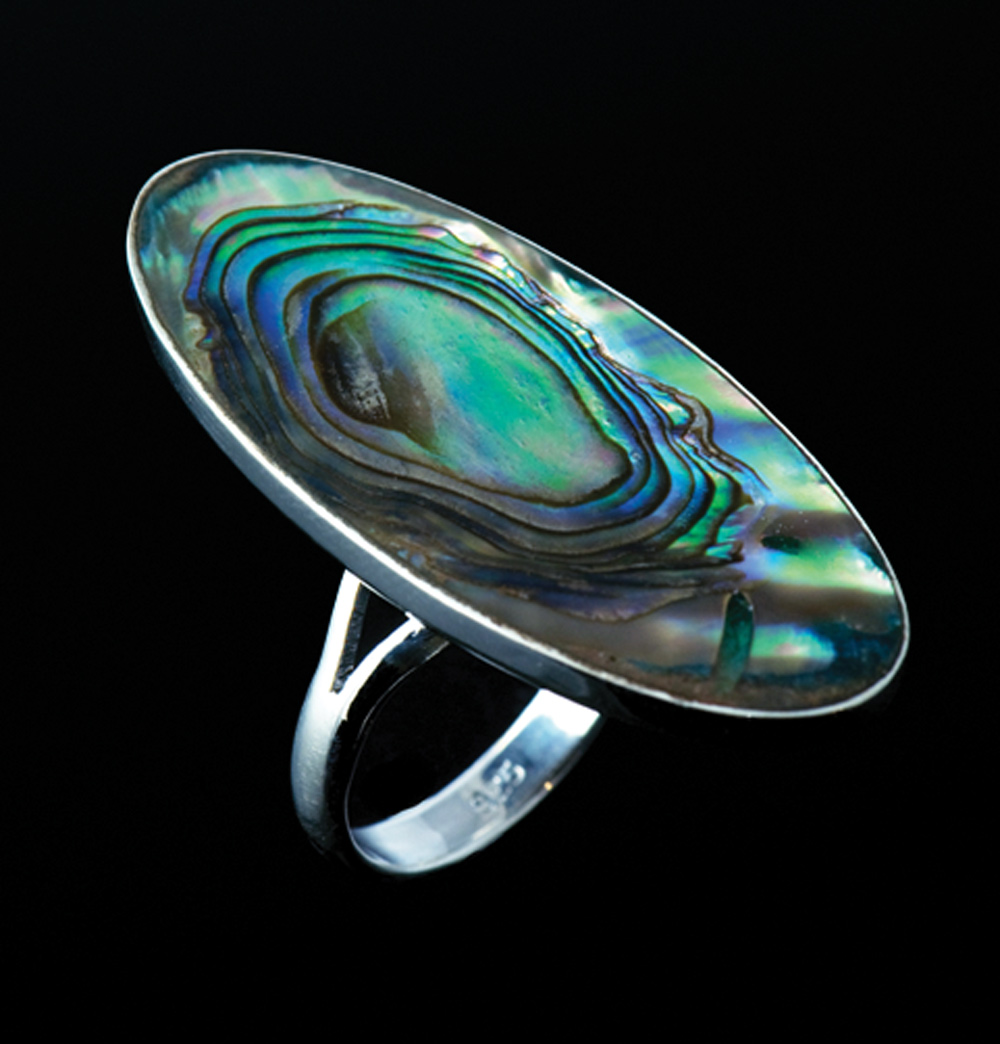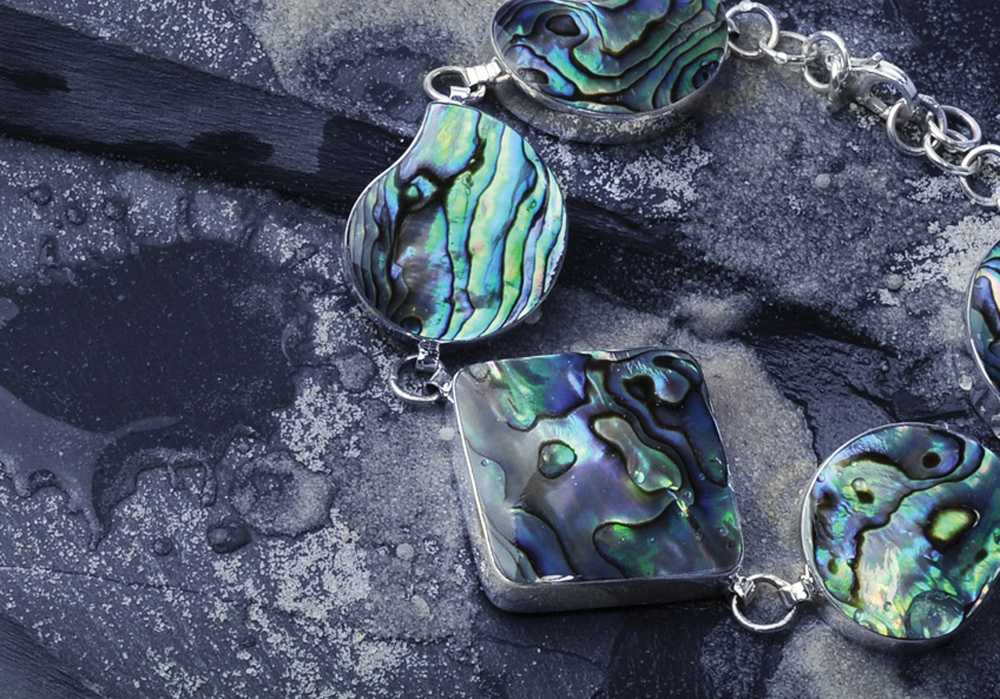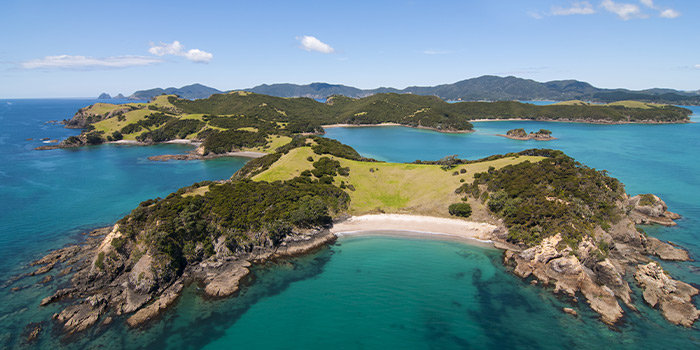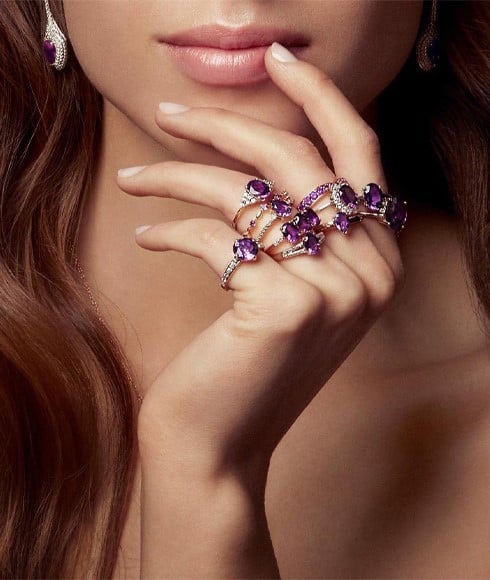Affectionately known as the Aurora Borealis of the ocean, Abalone sports a variety of colours that emulate the tropical seas from which it is born. From coral pinks to all shades of glistening, iridescent blues and seafoam greens, one can’t help but think that this could be a jewel made by mythical creatures and mermaids.
Considered a delicacy by many throughout the world, the Abalone, or 'ear shell', is a gastropod (a member of the mollusc family of sea creatures). The creature has a univalve shell, similar to the limpet, and attaches itself to rocks or structures under the sea by suction.
The shell of an Abalone is used in jewellery, and its exceptional colours are a by-product from farming the shellfish for its meat, making the crafting of jewellery from the gastropod very eco-friendly.

From one side the Abalone's shell looks rather dull and unexciting, and is quite often covered by other sea crustaceans; but, from the other side, it shines with an array of stunning colours and beautiful iridescence. It displays vivid blues, greens and pinks, all combined in a spectacular modern art styled pattern.
Each shell embodies a unique display of colour and markings - almost like the human fingerprint - therefore no two pieces are exactly the same. The gem is ideal for use in many large jewellery designs, from large pendants and dangly earrings to necklaces and Sterling Silver rings. In addition to jewellery, you may have seen this gem inlayed into acoustic guitars.

In New Zealand, the Maori name for the Abalone shell is the Paua shell (pronounced par-war). Therefore, when you see the name ‘Paua’, this refers to Abalone only from New Zealand. To give another example for better understanding, the best would be Csarite and Diaspore (Csarite is Diaspore, but only when it is found in Turkey).
Around the New Zealand coastline, there are both commercial organisations and hobbyists extracting the gem from the sea bed. Once on dry land, each shell is hand cut, buffed and polished by experts who understand the natural curves and patterns of the shell, ensuring each piece takes full advantage of all the colours of the ocean.

We cannot be sure whether it is due to the shell’s array of wonderful colours, or the fact that their next door neighbours, Australia, often boast about their prized Opals, but many in New Zealand refer to the Paua as ‘The Opal of the Sea’.
Without a doubt, the Paua ranks amongst the finest Abalone on the planet, displaying the most intense blues and greens which many locals see as mirroring their homeland. As you would expect, there is a lot of Maori legend and folklore surrounding their local treasure.

